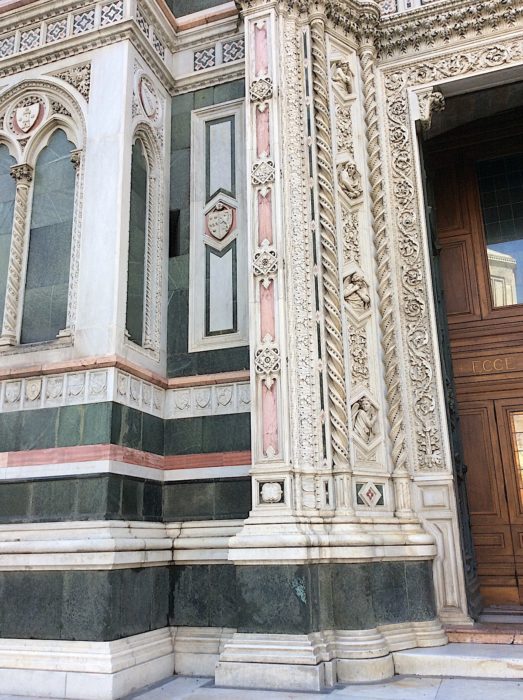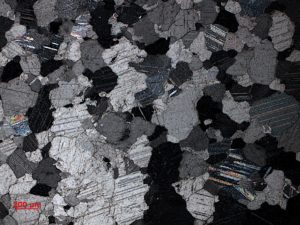
Lithotype
Apuan Marble
Common names
Marmo di Carrara, Marmo di Luni
Rock classification
Metanorphic rock
Marble Basins of Apuan Alps (Italy).
Metamorphic carbonatic rock outcropping in the nucleus of Apuan Alps and deriving from a sedimentary protolith having a limestone composition. The metamorphic event occurred during the Oligocene-Miocene (27-10 Ma before present) at temperature of 300-450°C and pressure of 5-6 Kbar.
The extractive history of the Apuan Marble began in Roman times, when it was mainly used in the monumental architectures. The extraction continued over the centuries, due to the wide use of this rock in the decoration of many religious buildings, mainly Christian. During the Renaissance, the Apuan Marble became a real distinctive feature of the statuary art, with the consecration by Michelangelo of a lithotype that still today represents a real territorial excellence.
The mineralogical composition of the Apuan Marble is characterised by high content of calcite (> 95%); in some cases dolomite is also present. In addition, various accessory minerals (quartz, albite, pyrite, mica) and pigments, which are responsible of the different varities of Apuan Marbles, can be found.
Macroscopic description
The Apuan Marble can be homogenous, white in color, or can be caracterised by variable quantities of spots or veins of different color, giving origin to the different varieties (Ordinary, Statuary, Cloudy, Veined, Bardiglio, Breccia Marble, etc.).
Microscopic description
The Apuan Marble shows a prevalent calcitic compostition and a typical omoeblastic or heteroblastic micro-structure depending on the quarries of origin; the contacts between the calcite granules can be different according to the various typologies: rectilinear, sutured or partially sutured; also the granulometry and porosity of the rock display a wide variability.


